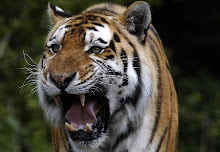
But I did not get to the canal until November. I had to land in the City of Light as it should, with a good history of nomadism in Paris at some point I will have to sit down to write in detail. I spent a month in my point of arrival at Regis’ place in Rueil-Malmaison, a chic suburb west of Paris, beyond La Défense and Nanterre; August and mid September at Leszek’s, in Malakoff, in the South; not even three nights in the Goutte d'Or, in the heart of Africa in Paris; and survived an entire UNESCO general conference sleeping on a sofa when I was given asylum at Ruth’s in rue Amiral Mouchez, in the thirteenth arrondissement, south of Paris, next to the Butte aux Cailles and the Parc Monstouris.
The small study on the Quai de Valmy, with its wonderful windows on the locks of Recollets, became the balcony of the Tiger: my haven, arrival and departure point of my comings and goings, of the so far three times I left Paris for long periods, always to return there sooner or later. In October 2006 I left for three months to work in the poorest region of Senegal, to return in January and find the canal full of tents for the mobilization in support of homeless people. Only a few months after my return, in early August 2007, I changed the Parisian summer to the damply cold winter of River Plate. I returned from Uruguay just when autumn had taken possession of Paris and the plane trees on the canal had undressed for the winter sleep. Not even a year after that I emptied the studio and packed my bags again to leave for my second African adventure: to Namibia and Zimbabwe, in that spring of 2008 that I started in my African paradise, to finish it in winter in a country that was disintegrating in the grip of a former hero turned into an operetta tyrant. To the canal I returned, physically and morally shattered, in July 2008.
I bid farewell to my everyday geography. The quiet drinks at l'Atmosphère at the corner of the rue des Recollets, or at the Jemmapes, on the other side of the Canal; those moments reading in the sun –when there was sun- on a Sunday afternoon lying on the grass at square Villemin with its view on the canal, after a meal started with an appetizer of oysters bought at the market next to Hôpital Saint Louis, just out of my swim at the Parmentier swimming pool. The walks up the Canal to go to the cinema at Bassin de la Villette; my mornings of seeing a whole city waking up and finding her already awake and mad with noisy traffic on the Place de la Republique; the garbage trucks which seemed to be in the room despite the double glass, and the indefectible queues that formed each day past seven in the evening. The cleaning of streets at seven in the morning, and the calm and stillness of the Canal closed to traffic on Sundays. The long afternoons in spring and summer, with the banks of the Canal full of people picnicking. And the branches of plane trees, which seemed part of the decoration of the house and reminded me at every moment which was the season.
And so many other things, of all the times passed in this peculiar corner of Paris, which was a disreputable industrial suburb for a long time, to become relatively recently an increasingly chic area, the territory of the "bobo" (Bourgeois Bohème). I leave this corner of the rive droite where both Montmartre and the Marais were within reasonable walking distance.
And I leave with the certainty that even if I go for a better place, I'll miss this part of Paris that became mine. A much more common, informal and easygoing Paris than the flamboyant west of the city. A part of me remains forever on the Quai de Valmy, between the water and the plane trees on the Canal.

